Lucky Bamboo, a timeless symbol of prosperity and good fortune, brings vibrant energy to any space. Whether you’re new to plants or a seasoned grower, this BTA Feng Shui guide will show you how to care for Lucky Bamboo so it thrives and fills your home or office with positive chi.
Discovering the Charm of Lucky Bamboo
Lucky Bamboo, known scientifically as Dracaena sanderiana, is not true bamboo but a member of the Dracaena family. Its lush green stalks and versatility make it a staple in feng shui practices and interior decor.
- Common Names: Lucky Bamboo, friendship bamboo, ribbon plant, water bamboo.
- Scientific Name: Dracaena sanderiana.
- Family: Asparagaceae.
- Origin: Native to West Central Africa and Northeast Angola, thriving in tropical climates.
- Appearance: Slender, cylindrical stalks with vibrant green leaves, often shaped into spirals, braids, or towers for aesthetic appeal. Stalks grow 1–5 feet tall indoors, with leaves 3–6 cm long, glossy, and slightly pointed.
- Growth Habit: Perennial shrub, adaptable to water or soil environments, with red roots visible in water setups.
- Unique Trait: Can be trained into artistic shapes by rotating stalks toward light sources, a technique used by skilled growers.
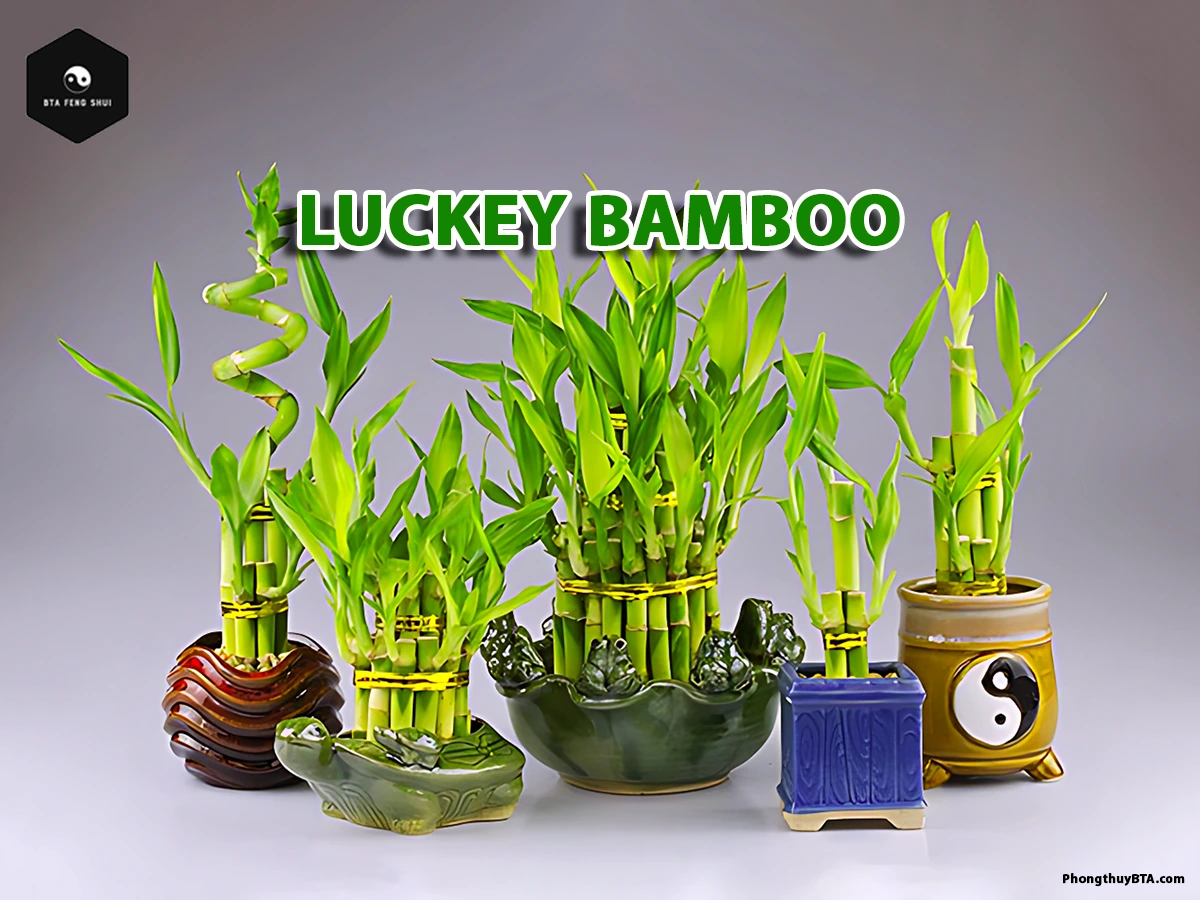
This plant’s resilience and low-maintenance nature make it ideal for both novice and expert gardeners, while its symbolic significance elevates its appeal in feng shui.
The Feng Shui Power of Lucky Bamboo
In feng shui, Lucky Bamboo is revered for attracting positive energy, prosperity, and balance. The number of stalks in an arrangement holds specific meanings:
- Two Stalks: Symbolize love and harmony in relationships.
- Three Stalks: Represent Fu (happiness), Lu (wealth), and Soh (long life).
- Five Stalks: Promote balance and power across life aspects.
- Six Stalks: Attract wealth and good fortune.
- Seven Stalks: Enhance health and vitality.
- Eight Stalks: Foster growth and prosperity.
- Nine Stalks: Signify great luck.
- Ten Stalks: Represent perfection.
- Twenty-One Stalks: Offer a powerful blessing.
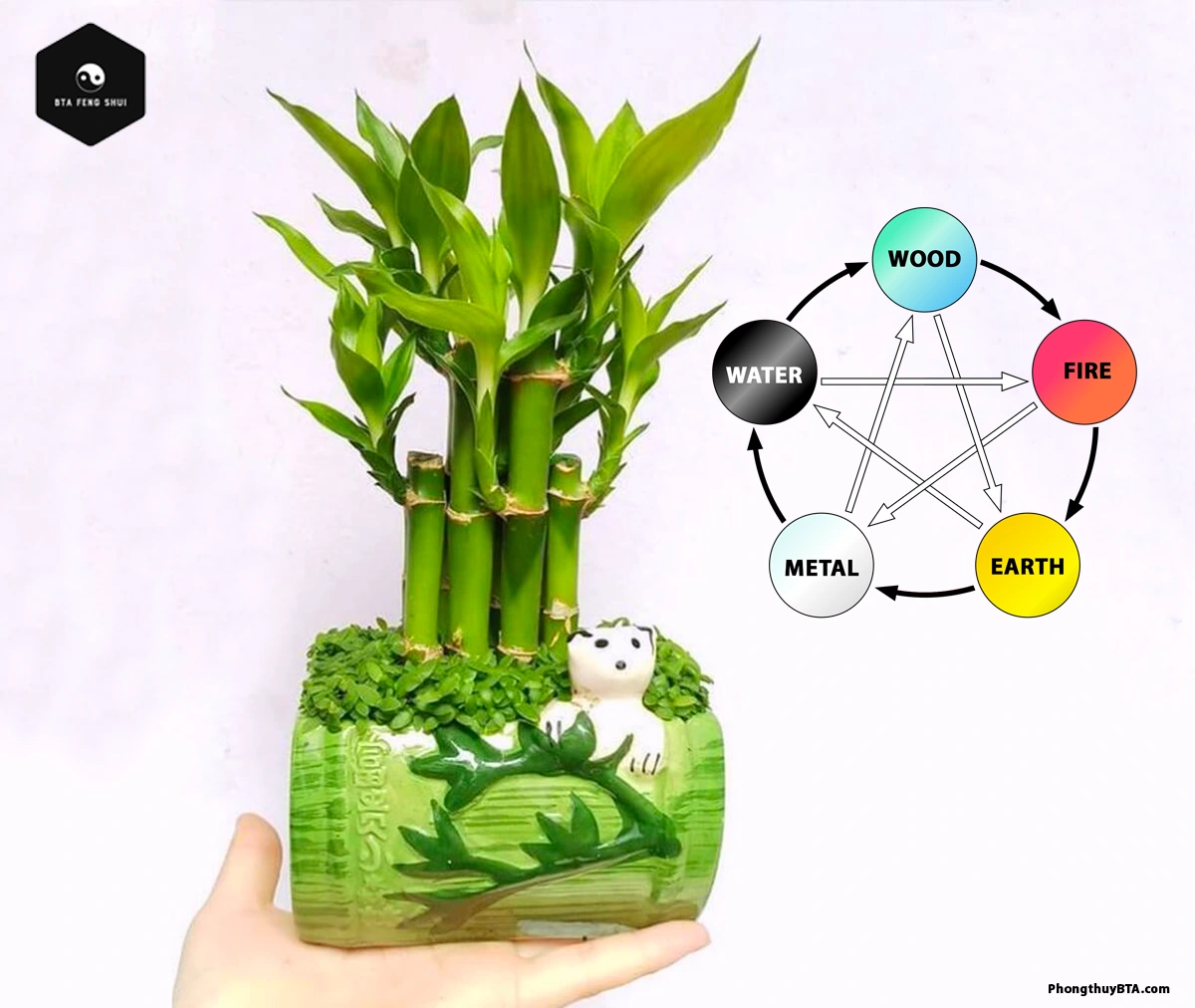
Note: Avoid four stalks, as the number four sounds like “death” in Chinese, making it inauspicious. Place your Lucky Bamboo in the east for health or southeast for wealth to maximize its feng shui benefits, ensuring it’s in a well-lit, draft-free area.
Expert Tips for Lucky Bamboo Plant Care
Proper Lucky Bamboo care ensures your plant remains vibrant and healthy. Here’s a detailed breakdown of its needs:
Propagating Lucky Bamboo
Lucky Bamboo is easy to propagate, allowing you to expand your collection or share with loved ones.
- Method: Cut a healthy stalk with at least one leaf joint using sterile shears. Trim leaves to expose growth nodes.
- Water Propagation: Place the cutting in distilled water, covering the base. Change water weekly until red roots form (about 30 days). Transfer to a vase with pebbles or soil.
- Soil Propagation: Plant the cutting in moist, well-draining soil. Keep it in a warm, bright spot for 4–6 weeks until roots develop.
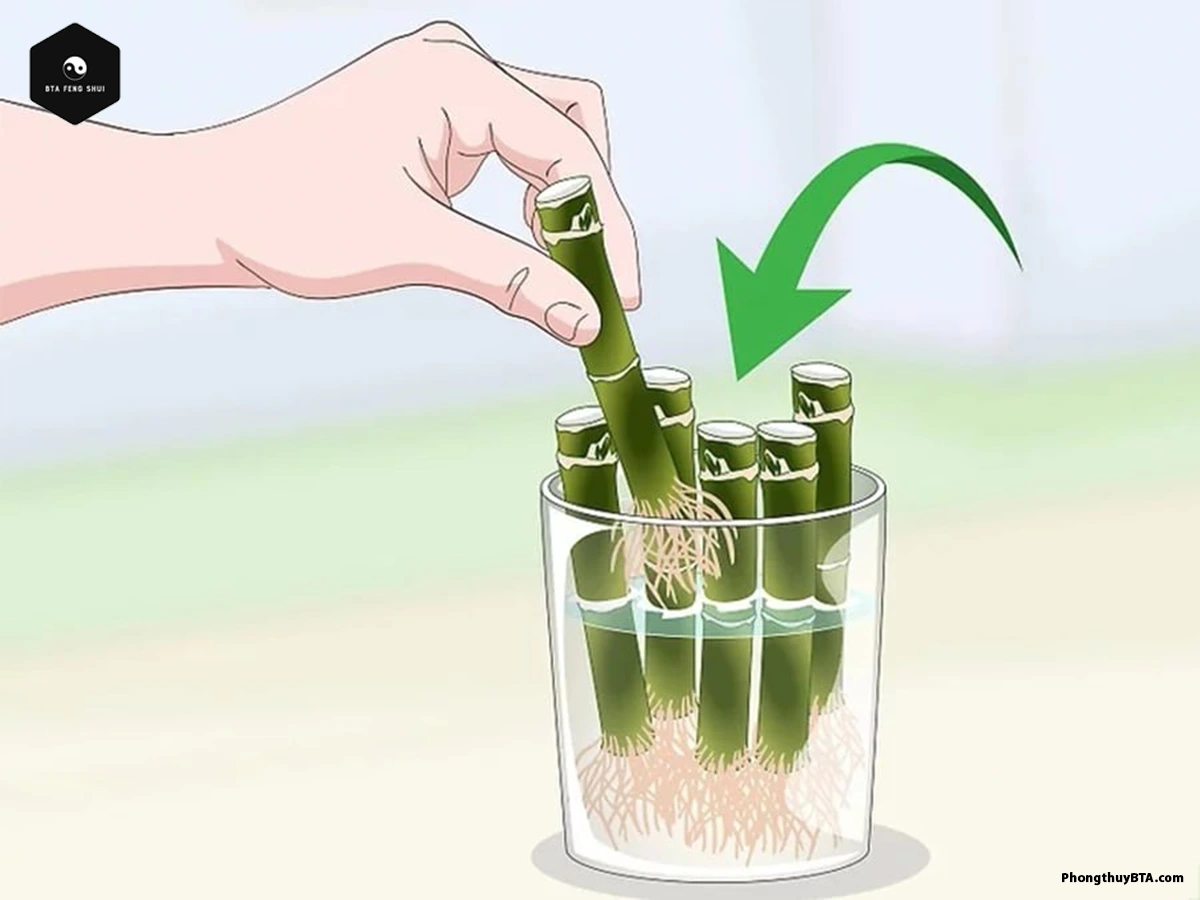
Growing in Soil vs. Water
Lucky Bamboo thrives in both mediums, offering flexibility:
- Soil: Use a well-draining mix with peat moss, perlite, and sand. Ensure the pot has drainage holes to prevent waterlogging.
- Water: Place stalks in a vase with pebbles, ensuring roots are submerged in 1–2 inches of water. Use distilled or bottled water to avoid chlorine buildup.
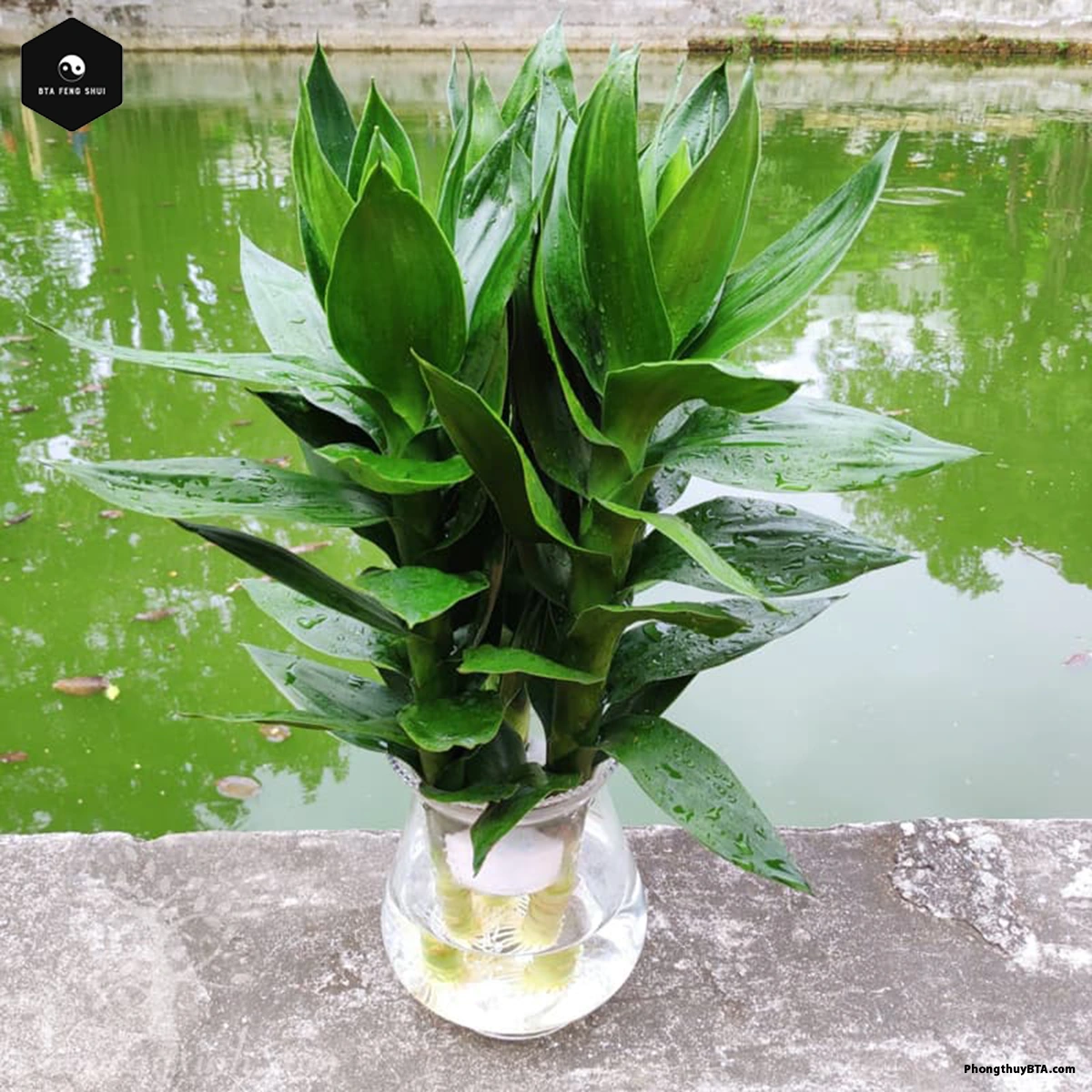
Light Requirements
Lucky Bamboo prefers bright, indirect light for 4–6 hours daily.
- Avoid direct sunlight, which can scorch leaves, causing yellowing or browning.
- Place near east- or west-facing windows with sheer curtains for filtered light.
- In low-light conditions, supplement with a grow light for 6–12 hours to prevent leggy growth.
Watering Lucky Bamboo
Watering needs depend on the growing medium:
- Water-Grown: Change water every 7–14 days to prevent bacteria or algae. Keep roots submerged but stalks above water. Use distilled water or tap water left out for 24 hours to remove chlorine.
- Soil-Grown: Water every 7–10 days, keeping soil moist but not soggy. Allow the top inch to dry between waterings.

How often to water a Lucky Bamboo plant? In general, water more often in summer and less in winter.
Temperature and Humidity
Lucky Bamboo thrives in warm, humid conditions:
- Temperature: Maintain 65°F–90°F (18°C–32°C). Avoid drafts, air conditioners, or heating vents.
- Humidity: Aim for 45%–55% humidity. Mist leaves every few days or use a pebble tray to boost moisture in dry environments.
Fertilizing
Feed sparingly to avoid over-fertilization:
- Use a diluted liquid fertilizer (10-10-10 or 20-20-20) once every 1–2 months during spring and summer.
- For water-grown plants, add a drop of fertilizer to the water every other month.
Pruning and Shaping
Pruning encourages bushy growth and maintains shape:
- Trim offshoots to within 1–2 inches of the main stalk using sterile shears.
- To create unique shapes, rotate the plant slowly toward a light source over weeks.
- Remove yellow or brown leaves promptly to promote healthy growth.
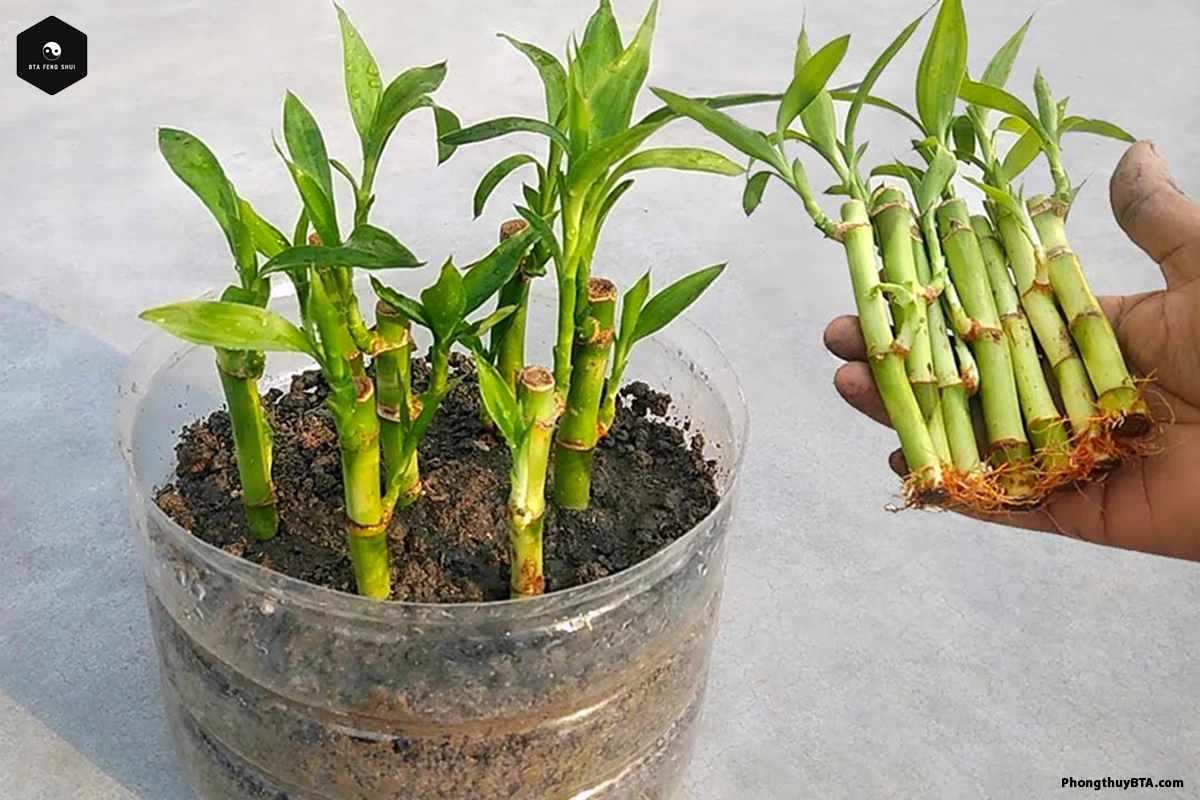
Repotting
Repot every 1–2 years or when roots crowd the container:
- Choose a pot 2 inches larger than the current one.
- For water-grown plants, clean pebbles and the vase before transferring.
- For soil-grown plants, use fresh potting mix and ensure proper drainage.
Common Pests and Diseases
Lucky Bamboo is relatively pest-resistant but may face:
- Pests: Spider mites, mealybugs, or aphids. Treat with neem oil or insecticidal soap.
- Diseases: Root rot or fungal spots from overwatering or poor water quality. Remove affected parts and use distilled water.
Read more:
- ZZ Plant Care: Your Guide to Growing a Feng Shui Powerhouse
- China Doll Plant: Feng Shui Meaning and Expert Care Guide
Additional Benefits of Lucky Bamboo
Beyond feng shui, Lucky Bamboo offers practical advantages:
- Air Purification: Filters pollutants like benzene, improving indoor air quality.
- Aesthetic Appeal: Adds vibrant greenery to desks, shelves, or entryways.
- Stress Relief: Caring for the plant promotes relaxation and mindfulness.
- Versatility: Adapts to various décor styles, from minimalist to traditional.

Frequently Asked Questions About Lucky Bamboo
How often should I water my Lucky Bamboo?
For water-grown plants, change the water every 7–14 days using distilled water to keep roots submerged. For soil-grown plants, water every 7–10 days, ensuring the soil remains moist but not waterlogged.
Does Lucky Bamboo need sunlight?
Lucky Bamboo thrives in bright, indirect light for 4–6 hours daily. Avoid direct sunlight to prevent leaf burn. It can tolerate low light but may grow leggy.
How do you take care of a Lucky Bamboo plant in rocks?
Ensure roots are submerged in 1–2 inches of distilled water with clean pebbles. Change water weekly, clean the vase to prevent algae, and place in bright, indirect light.
Can Lucky Bamboo grow in water?
Yes, Lucky Bamboo can thrive in water with pebbles, as long as roots are submerged and water is changed weekly using distilled water to avoid chemical buildup.
How long do Lucky Bamboo plants live?
With proper care, Lucky Bamboo can live 1–2 years in water and up to 3–5 years in soil. Regular maintenance extends its lifespan.
Is Lucky Bamboo toxic to pets?
Yes, Dracaena sanderiana is toxic to cats and dogs, causing vomiting or diarrhea if ingested. Keep it out of reach of pets and children.
How to keep a Lucky Bamboo plant alive?
Maintain bright, indirect light, use distilled water, change water weekly (for water-grown plants), and avoid over-fertilizing. Monitor for pests and prune as needed.
Does Lucky Bamboo need soil?
No, Lucky Bamboo can grow in water with pebbles or in well-draining soil. Both methods work well with proper care.
If you found this guide helpful, please leave a 5-star review and share it with fellow plant lovers! Visit BTA Feng Shui for more expert tips on creating harmonious spaces.


























